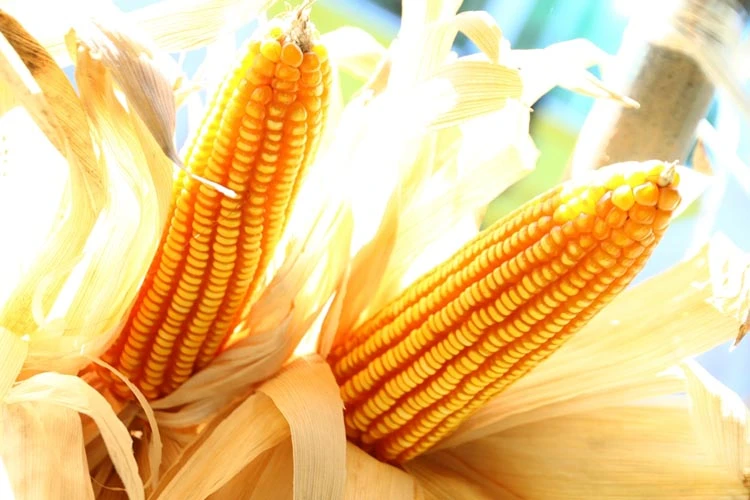US corn farmers face challenges as dry weather continues

Dry US weather conditions during the growing period of the marketing year 2022-23 corn crop has resulted in less-than-expected yields.
The lack of rain has also lowered water levels in key US waterways used to barge corn to New Orleans for export.
According to the US Drought Monitor data, 82% of the US was under abnormally dry to extreme drought conditions as of Oct. 20. According to analysts, this is the highest area under abnormally dry conditions since 2000.
Some of the dryness in the US can also be contributed to the ongoing La Nina phenomenon, which typically results in drier conditions over parts of the US and above-normal hurricane activity over the Atlantic Basin.
Over the crucial corn-growing months, weather in most parts of the US remained in need of rain. The July-September period ranked as the warmest on record for this three-month period, according to a report from National Oceanic and Atmospheric Administration’s environmental data division.
Apart from reduced overall yield for US corn, some localized crops might have suffered quality concerns as well owing to the dryness.
After a wet start of the MY 2022-23 US corn-planting season dampened sentiments of record-high yields or production, dryness took over and continued the trend of lowering yields and production estimate
In MY 2022-23, the US corn yield estimate was lowered three times until October since the first estimate came out in May. The US Department of Agriculture lowered its US corn yield estimate for the MY 2022-23 to 171.9 bushels/acre in October, from its initial estimate of 177 bu/acre in May, driven majorly by the dryness during the growing season.
This led to a drop in US corn production numbers as well.
The USDA now sees US corn production to be at 13.85 billion bushels (364.11 million mt), down 4%, or 61 million bushels, from its first estimate in May. The estimated MY 2022-23 US corn production is the lowest in three years.
A similar reduction also seen for US corn export numbers by the USDA over the months. The corn used for ethanol estimate was also lowered, with smaller crop and higher prices cited.
The US corn ending stock estimate for MY 2022-23 also shrank by over 16% May through October.
Historical data suggest news about the size of the US crop after October is limited, a recent report by University of Illinois said. The US corn output numbers are almost clear by October and the focus then shifts to South American corn crops, the university said.
Globally as well, corn production is estimated lower on the year on the back of lower production in the US, the EU and some other countries amid tightening stocks.
The crop prices, however, have been largely supported on the back of smaller supplies. Platts assessed US Corn CIF New Orleans at $339.55/mt Oct. 24, almost 11% up on the month and 27% on the year. Platts is part of S&P Global Commodity Insights.
On the Chicago Board of Trade, the December futures contract of US corn was trading Oct. 25 at $6.85/bu, up around 26% on the year.
Current dryness in the US is aiding corn maturation and the harvest.
The corn harvest in the US was reported 61% complete as of Oct. 24, below last year’s 64% but above the five-year average of 52%, said the USDA.
However, lower water levels in key US rivers has been restricting export of the harvested corn.
“Most recently, low river levels have reduced barge capacity,” the USDA said in a recent Grain Transportation report. “The confluence of tight transportation supply and elevated grain transportation demand during harvest will put extra pressure on the grain storage system.”
Beginning in July, the average level of the Mississippi River at New Orleans was well below the five-year average and continued to drop, it added.
In recent weeks, barge carriers and shippers have dealt with increasingly severe low water levels — reducing shipping capacity and resulting in record rates, the USDA said.
With lower water levels, vessel operators and shippers have had to use lighter loads because of draft restrictions and fewer barges per tow. American Commercial Barge Line said tonnages for southbound barges have been reduced by 20%-27%. Moreover, the number of barges per tow has been reduced by 17%-38%.
Since the beginning of the year, 13.888 million mt of corn has been moved by barges to the US Gulf Coast as of Oct. 15, down 30% on the year-ago period.
The weather forecast has been for not enough rain to alleviate low water levels, which has driven some trading houses to switch corn origins from the US Gulf to Brazil in order to free up space to move more soybean.
“The problems that low water levels are causing don’t seem to be going away any time soon, so we are shifting our shipments from the US to Brazil origin,” a buyer based on Mexico’s Gulf Coast said.
Read also
Wheat in Southern Brazil Impacted by Dry Weather and Frosts
Oilseed Industry. Leaders and Strategies in the Times of a Great Change
Black Sea & Danube Region: Oilseed and Vegoil Markets Within Ongoing Transfor...
Serbia. The drought will cause extremely high losses for farmers this year
2023/24 Safrinha Corn in Brazil 91% Harvested
Write to us
Our manager will contact you soon



